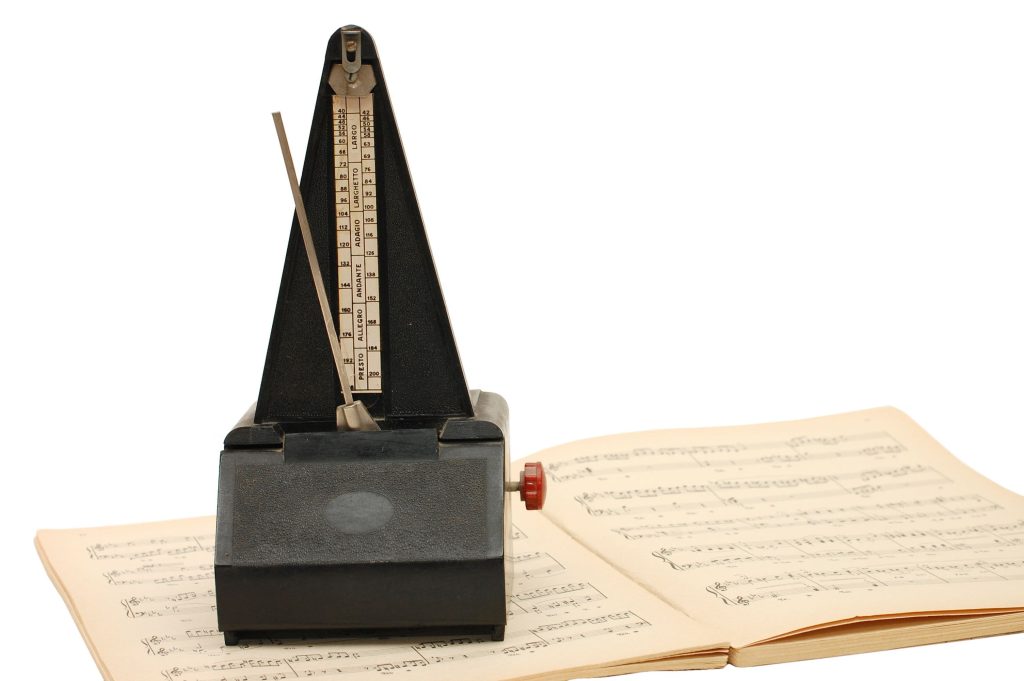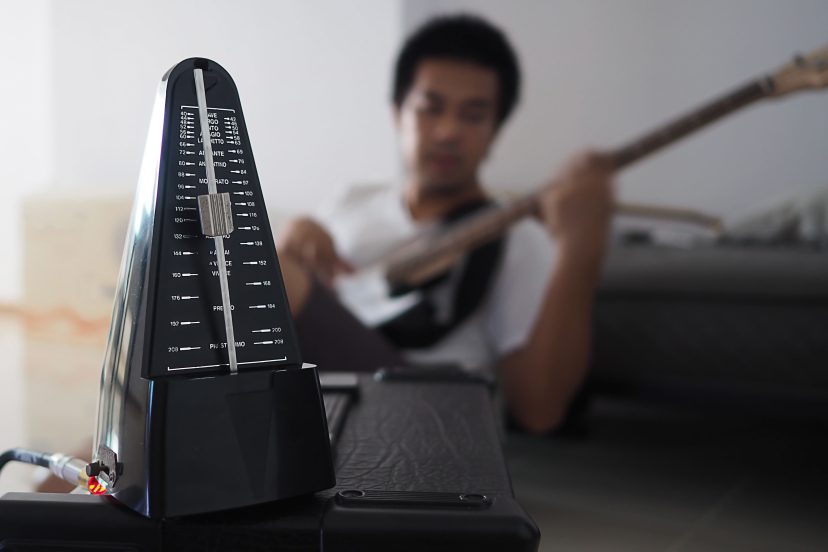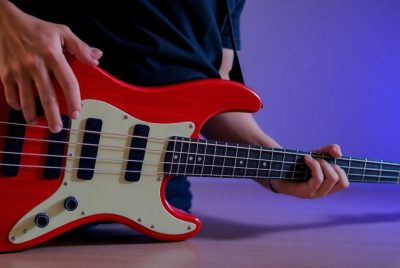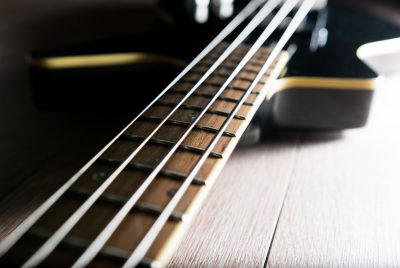Metronome for Bass Guitar: Beat Goes On
I can’t express enough how crucial timing is to mastering this beautiful instrument. A metronome for bass guitar , those steady pulse-keepers, aren’t just tools; they’re essential companions in our musical journey. I was blessed with a very good internal clock. But working with a metronome can really accelerate the the ability to lock into a groove and keep it.
History of the Metronome
The metronome, as we know it today, was first patented by Johann Maelzel in 1815, although the concept of mechanical time-keeping devices dates back to the early 9th century. Originally designed for musicians to maintain consistent tempo, its evolution has been integral to music training across all instruments, bass guitar included.

Why Bass Guitarists Need a Metronome
The bass guitar is the backbone of a band’s rhythm section; it connects the harmonic content with the rhythmic foundation. Legendary bassists like James Jamerson and Jaco Pastorius swore by the metronome, practicing tirelessly to perfect their timing and groove. This disciplined approach is what sets apart great bassists.
Types of Metronomes for Bass Guitar
Whether you prefer the old-school tick of a mechanical metronome for bass guitar or the customizable beats of digital and app-based models, there’s a metronome out there to suit your style. Each type offers unique benefits, from the visual swing of a pendulum to the complex beat patterns modern devices can produce.
Look for a metronome that allows a range of tempos and complex rhythm patterns. Beginners might prefer simple, user-friendly models, while professionals could opt for devices that offer more flexibility and connectivity with other digital tools. Here are five top metronomes on the market that are great for bass guitar players, covering a range of features from basic to advanced:
1.Boss DB-90 Dr. Beat Metronome Model: DB-90
The Boss DB-90 is renowned among professional musicians for its versatility and robust features. It offers a range of rhythms and sounds that cater to different musical styles, including complex patterns suitable for bass guitarists. The metronome also includes a built-in microphone, MIDI input, and a rhythm coach feature that provides feedback on your playing, making it ideal for both practice and live performances.
2. Korg MA-2 Digital Metronome Model: MA-2
An excellent choice for beginners, the Korg MA-2 is compact, affordable, and easy to use. It features a clear display and enhanced volume, which is perfect for bass players to hear over their playing. The MA-2 covers various time signatures and rhythm patterns, making it a versatile tool for practicing different genres.
3. Tama Rhythm Watch RW200 Model: RW200
Designed primarily for drummers but equally beneficial for bassists, the Tama Rhythm Watch RW200 offers a large, easy-to-read backlit display and a strong, adjustable volume control. It allows for complex rhythm configurations and can store multiple rhythm settings, which is great for bass players who perform songs with varying tempos.
4. Peterson BodyBeat Sync BBS-1 Model: BBS-1
The Peterson BodyBeat Sync BBS-1 stands out with its ability to transmit beats through vibrations, allowing bass players to feel the beat physically rather than just hearing it. This feature is particularly useful in loud environments. It also syncs wirelessly to other units, making it ideal for band settings where multiple musicians need to keep in sync.
5. Wittner 845131 Taktell Piccolo Metronome Model: 845131
For those who prefer a traditional mechanical metronome, the Wittner Taktell Piccolo is a top choice. It is known for its reliability and precise tempo settings. The compact and durable design makes it portable and easy to use anywhere, providing a clear and audible click that is perfect for bass practice sessions.
These metronomes offer a range of features that cater to both beginners and professional musicians, enhancing practice sessions and performance precision.
How to Use a Metronome Effectively
Start slow, setting your metronome to a comfortable pace, and gradually increase the tempo as your skills improve. Use it to explore different rhythms and challenge yourself with faster speeds or more complex patterns. Experiment with subdivisions by setting the metronome to play quarter notes, eighth notes, or even sixteenth notes. This practice helps in mastering complex rhythmic structures, essential for advanced bass playing.
Common Challenges and How to Overcome Them
One of the biggest challenges using a metronome for bass guitar, is adhering to the metronome during fast pieces. Start slower than the target tempo and incrementally build up speed. Practicing scales, arpeggios, and parts of songs at increased tempos can build the necessary muscle memory and confidence. Regular practice with a metronome not only improves your timing but also prepares you for playing with other musicians. It fosters a sense of rhythm that is instinctive, making ensemble performances more cohesive.
Integrating Metronome Practice into Your Routine
Incorporate metronome practice daily, even if it’s just a few minutes. Set goals, like mastering a particular piece at a certain tempo, and track your progress. Celebrate small victories to stay motivated. Modern metronomes can connect to music software and other devices, making them incredibly versatile for practice and live performances. Apps can also provide a more interactive experience, with features that help you track your progress over time.
Resources for Further Learning
There are countless resources available for those looking to deepen their understanding of rhythmic theory and metronome techniques. Books like “Modern Reading Text in 4/4” and websites offer a plethora of exercises that can improve your proficiency. Learning to think beyond 4/4 and feeling those other time signatures can be exhilarating and exciting.
Conclusion
Embracing the metronome metronome for bass guitar in your practice routine is more than a discipline; it’s a pathway to musical excellence. Whether you’re just starting out or you’re a seasoned player, the metronome is your steadfast ally in the quest for perfect timing.
FAQs
1. What’s the best metronome for a beginner bass guitarist?
For beginners, a simple digital metronome is often the best choice. These are user-friendly, generally affordable, and provide essential features like adjustable tempo and clear audible beats. Models such as the Korg MA-1 or the Tama Rhythm Watch are great starters as they are both reliable and easy to operate.
2. Can using a metronome improve my ability to play with a band?
Absolutely! Regular practice with a metronome can significantly enhance your timing and rhythm, which are crucial when playing in a band. A metronome teaches you to keep a steady pace, helping you to lock in with the drummer and other musicians, thus improving the overall tightness of the band’s performance.
3. How often should I practice with a metronome?
Ideally, you should incorporate a metronome into your daily practice routine. Even if it’s just for part of your practice session, regular use can help develop a strong sense of timing and rhythm. Start with simple exercises and gradually increase the complexity as your comfort with the metronome grows.
4. Are there any disadvantages to using a metronome?
Over-reliance on a metronome can sometimes lead to a mechanical feel in your playing if not balanced with freeform practice. It’s important to also spend time playing without a metronome to develop your internal sense of timing and to ensure your playing feels natural and expressive.
5. Can I use a metronome during live performances?
Yes, many bassists use a metronome during live performances, especially in settings where precise timing is crucial. In-ear metronomes are particularly useful for this purpose as they allow the musician to hear the beat without it being audible to the audience. This tool can be invaluable for maintaining consistent tempo throughout a live performance.





